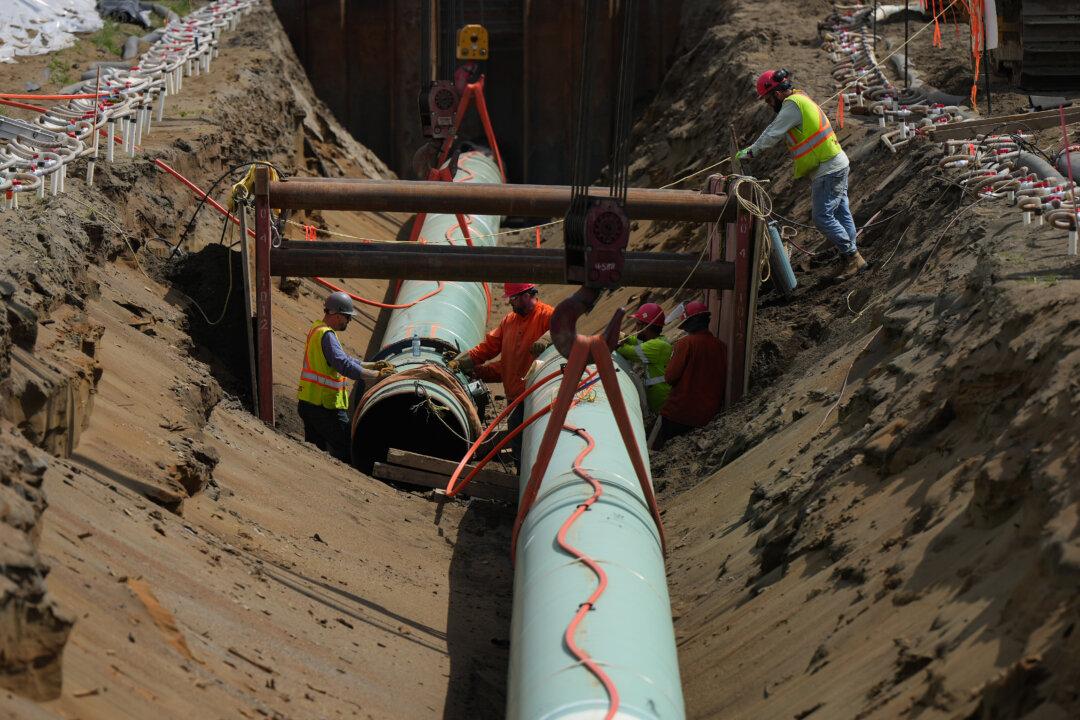Within a span of eight weeks, labour unrest has disrupted key transportation systems in Canada at crucial times, with more potential trouble looming.
WestJet mechanics went on strike the Friday ahead of the Canada Day long weekend, leading to the cancellation of 1,171 flights by the time the three-day strike ended. Both of Canada’s main railways locked out workers represented by the Teamsters Canada Rail Conference on Aug. 22, during the fall harvest. On the same day, Air Canada pilots authorized their union to take strike action as early as Sept. 17.
Ship and dock foremen at the Port of Vancouver nearly went on strike in July over proposed automation, and may yet do so if a resolution isn’t found.
Labour unrest in Canada has been increasing in recent years. Just over 1,150 work stoppages have occurred in Canada in the past 3 1/2 years, from 2021 up to June 2024, according to government figures, with the largest number—745—taking place in 2023. This included a major strike by the Public Service Alliance of Canada in which over 155,000 federal government workers walked off the job.
There are a number of factors behind the surge in job action, including rising living costs due to inflation and an increased aversion to government intervention in labour disputes.
“We’ve suffered a tremendous amount of inflation, and where you have unions who have power, they’re exercising it to try and catch back up for what they feel they’ve lost,” Barry Prentice, a University of Manitoba professor of supply chain management, said in an interview.
Inflation
Inflation has been steadily climbing, reaching 8.1 percent in June 2022. It fell to 2.5 percent in July this year, but still the accumulated increases are taking a toll.The precedent of 1970s stagflation (a stagnant economy along with high inflation) leaves workers with lingering reason for concern.
“I’m old enough to remember that inflationary period, and we got into what was a real wage price spiral,” Prentice said, adding that he sees current inflation rates continuing to be a problem, despite the recent slow down.
“People are feeling pinched between higher food costs, and those certainly living in places like Vancouver and Toronto that are facing very burdensome mortgage rates if they live alone,“ he added. ”I’m shocked sometimes at how much prices have gone up for certain things.”
US Movements
John Mortimer, president of the Canadian LabourWatch Association, says that while inflation in both Canada and the United States has workers concerned, Canadian workers are noting gains made by unions south of the border.“Inflation has been very significant in both countries through the COVID period,” he said. “When I talk to employers facing union drives and unionized employers, they’ve got lots of employees who are really having a hard time, really upset, really pushing things. And some people are deciding to call strikes now.”
Pilots make healthy salaries on relatively few hours of work and feel economic pressures less than the broader workforce, Mortimer notes. But, he says, the needs of the employer have put pilots in “the driver’s seat” not just in planes, but in labour negotiations.
“Airlines have a staffing problem in the pilot’s chair, from what I hear from WestJet and Air Canada people,” he said. “There’s not enough of them, and it takes a long time to train them. And during COVID, a bunch of pilots resigned. A bunch got laid off because they wouldn’t get vaccinated, and some of them aren’t coming back.”
Mortimer, whose career in human resources spans four decades, believes big gains by U.S. unions following an especially confrontational approach has emboldened Canadian unions to do the same.
In Detroit last fall, the United Auto Workers union went on strike against the three major automakers—General Motors, Ford, and Stellantis—after failing to reach an agreement on a new four-year contract. The workers at all three companies made substantial gains, including a 25 percent raise over the life of the contracts, with an 11 percent pay boost upon ratification.
“Not only have we raised our wages, we have dramatically decreased the time it takes to get to top pay,” union president Shawn Fain said at a media event last November. “Part of our strength came from all three contracts expiring at once and taking on all three companies at once.”
In August 2023, threats of a Teamsters Union strike of 340,000 workers at UPS in the United States led to a five-year agreement that left the average driver making US$170,000 per year in pay and benefits.
Mortimer says Canadian unionized workers have taken note.
“They’re being affected by inflation ... and they’re saying: ‘We’re going to go for it and we’re going to see what we can get. Why wouldn’t we?’” he said.
Government
The labour environment in Canada changed with the passage of Bill C-58 on June 20. The legislation, which comes into effect in June 2025, bans employers from using replacement workers during work stoppages and also bans unionized workers from crossing their own picket lines in defiance of their union.These provisions apply to federally regulated sectors, such as interprovincial and international air, rail, road, and marine transportation; banks; telecommunications; and postal and courier services.
A study by the Montreal Economic Institute (MEI), released June 3, says the bill will likely lead to more and longer strikes. The findings were based on economic literature and comparisons between jurisdictions with laws that ban replacement workers—such as B.C., Quebec, and France—and jurisdictions without such laws.
In an analysis that did not include federally regulated companies, the study found that between 2014 and 2023, the number of days of work stoppage per 1,000 workers was 2,180 in Quebec, 931 days higher than second-place Newfoundland and Labrador. Alberta had just 34 days lost during that period.
Renaud Brossard, MEI’s vice president of communications, told The Epoch Times that the legislation has already “emboldened the unions” and made employers less “tempted” to use replacement workers, knowing this approach will soon be illegal.
Brossard said that this dynamic, combined with cost-of-living and inflationary increases, has pressured both employers and employees alike, making a satisfactory resolution harder to find.
“For a lot of people, wages have not kept up, so that has made a lot of union members much more vocal, much more demanding in their wage negotiations. And companies are—it’s not like they’ve got all this extra profit just lying around to throw towards employees.”
Previous analysis cited in the MEI paper indicated that strikes tend to be 60 percent longer in jurisdictions that banned replacement workers.
There’s also a change at the political level, as the government is increasingly less willing to be seen as being against workers.
Mortimer notes that past private member’s bills that sought to achieve what Bill C-58 intended had been blocked by previous governments, including the Liberal government of Jean Chrétien. By contrast, Bill C-58 passed with even the Conservatives in support, he says.







